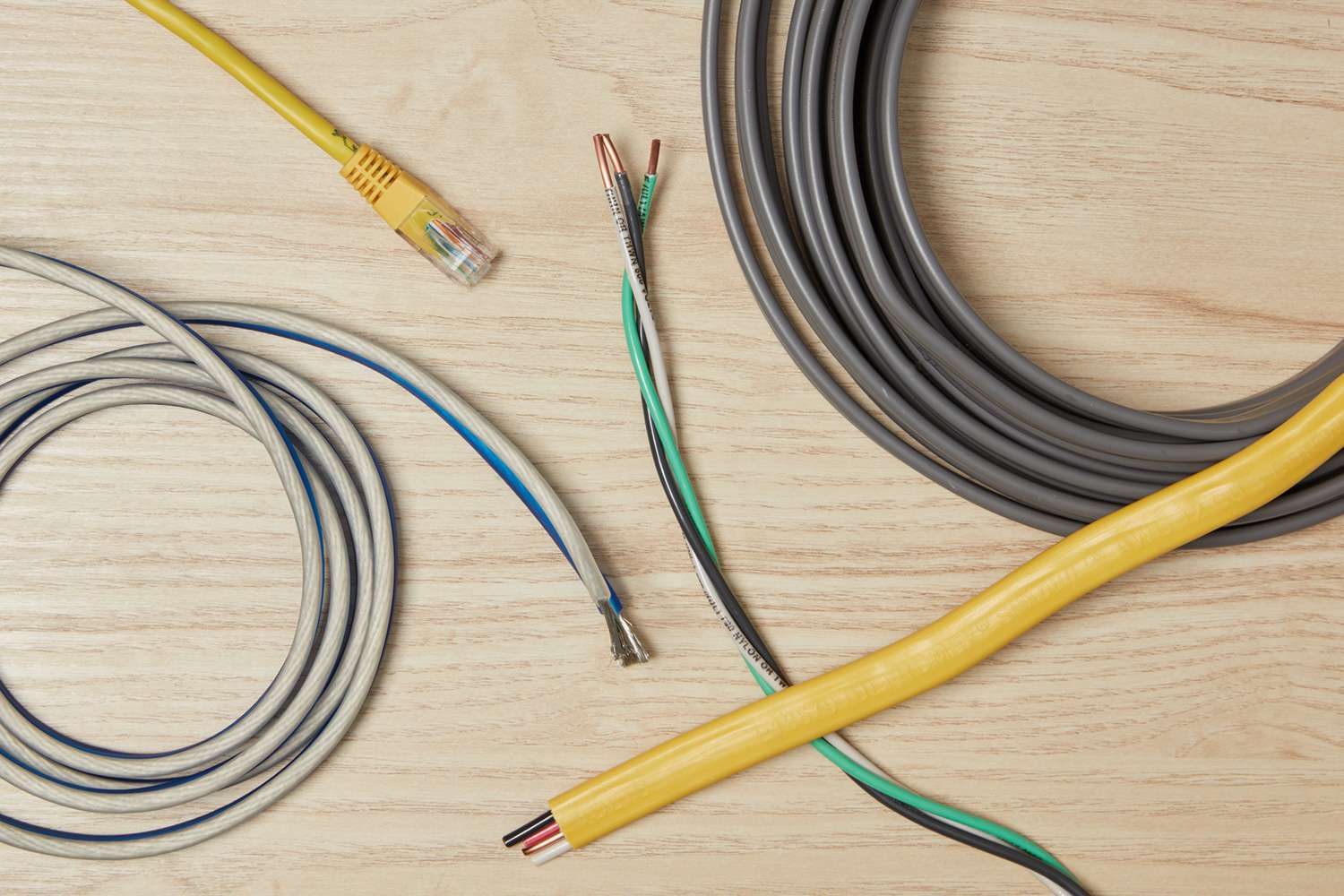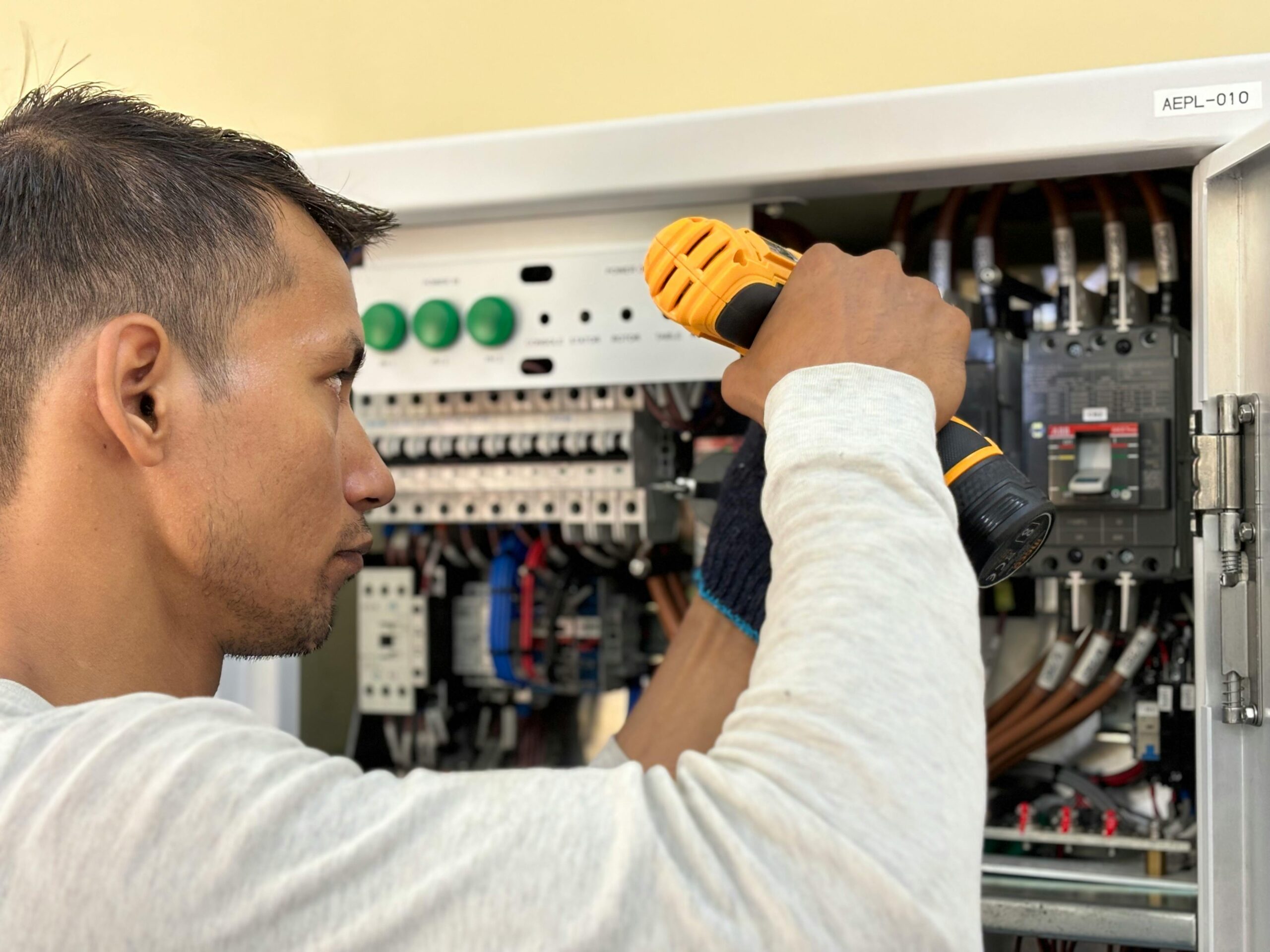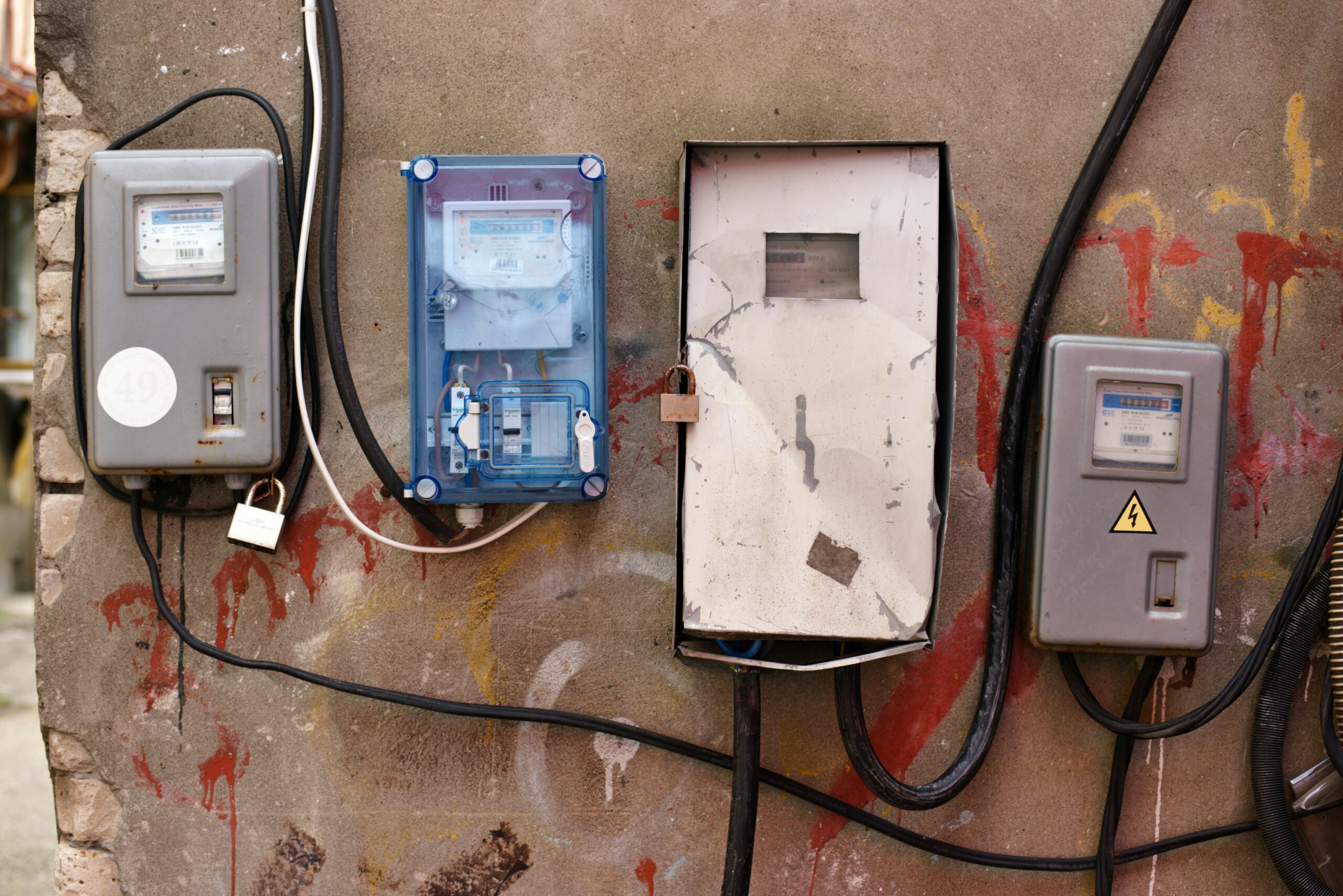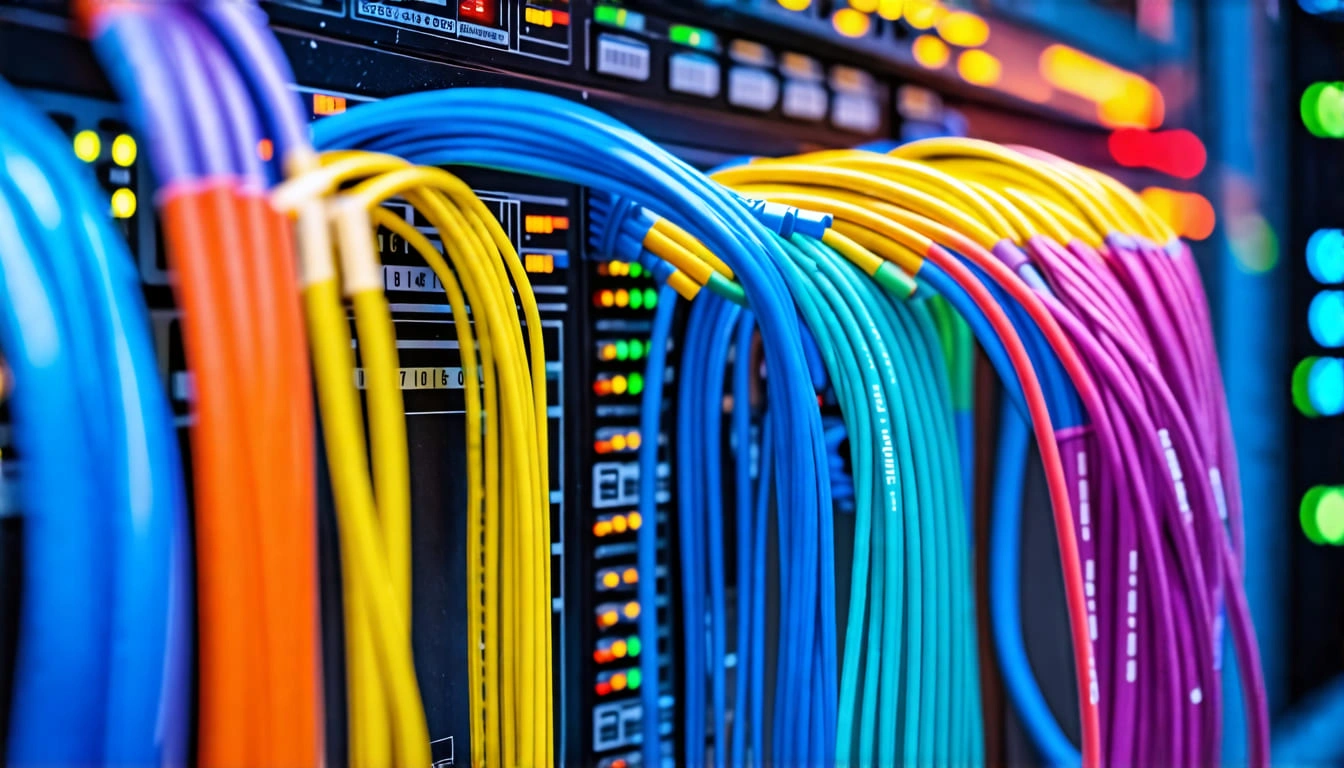Electrical wiring is crucial in any building or structure that utilizes electricity. It refers to the network of wires that transmit electricity from the source to various electrical appliances and devices. Electrical wiring ensures electricity flows safely and effectively to power lights, appliances, and other electronic devices.
In this blog post, we will provide a complete guide to electrical wiring types, covering their characteristics, and uses to help you make informed decisions when it comes to your electrical system.
Understanding Electrical Wiring
Understanding these basic components of electrical wiring, types of electrical circuits, conductors, and insulators is crucial for anyone working with electrical systems to ensure they operate safely and efficiently. These are the basic components of electrical wiring, along with types of electrical circuits, conductors, and insulators:
Types of Electrical Circuits
- Series Circuit: The electrical components are connected in a single pathway, causing the same amount of current to flow through each component.
- Parallel Circuit: The electrical components are connected in multiple pathways, allowing different amounts of current to flow through each component within the same circuit.
Types of Electrical Conductors
- Copper: It is the most common electrical conductor used for wiring due to its low resistance and high conductivity.
- Aluminum: It is a lightweight conductor used in large power transmission lines.
- Silver: It is the most conductive metal but is less frequently used in electrical wiring due to its high cost.
Types of Electrical Insulators
- Rubber: It is a commonly used insulator for electrical wiring.
- Plastic: PVC (polyvinyl chloride) is the most common type of plastic used for insulation.
- Glass: Fiber optic cables use glass as an insulator because it transmits light signals better than other materials.
Types of Electrical Wiring
Different types of electrical wiring are used for various applications in building or electrical installations. Below are brief descriptions, usages, advantages, and disadvantages of the Types of Electrical Wiring:
- Non-Metallic Sheathed Cable (NM)
- Description: NM cable comprises two or more insulated conductors and a bare ground wire inside a plastic sheath.
- Usage: Commonly used for indoor residential wirings, such as lighting and electrical outlets.
- Advantages: Easy to install, versatile, and relatively inexpensive.
- Disadvantages: Limited capacity and may not be safe in high temperatures.
- Metal-Clad Cable (MC)
- Description: MC cable consists of insulated wires wrapped in a flexible metal casing.
- Usage: Used for indoor commercial and residential wiring where extra protection is necessary.
- Advantages: Good for high-traffic areas and high-temperature environments and can be used in outdoor applications.
- Disadvantages: Needs special tools for installation and can be costly.
- Armored Cable (AC)
- Description: AC is similar to MC cable but has a spiral metal casing for added protection.
- Usage: Used for indoor and outdoor commercial and residential wiring where extra protection is necessary.
- Advantages: Good for high-traffic areas and can withstand environmental exposure and interference from another wiring.
- Disadvantages: Expensive and needs proper maintenance.
- Underground Feeder Cable (UF)
- Description: UF cable has multiple insulated wires and a ground wire encased in a plastic sheath designed for underground installation.
- Usage: Typically used in outdoor buried applications where moisture and water exposure are a concern.
- Advantages: Resists moisture and water exposure.
- Disadvantages: Burial depth requirements and limited capacity.
- Conduit
- Description: Conduits are tubes made of metal, plastic, or fiber material used to encase wires.
- Usage: Ideal for exposed or outdoor electrical wiring installation.
- Advantages: Offers excellent protection against physical damage, moisture, and heat.
- Disadvantages: Adding or removing wires inside the conduit can be challenging and can be expensive.
- Knob and Tube Wiring (K&T)
- Description: K&T wiring is a system of open wire conductors that run through protective ceramic tubes and pass through joists and walls.
- Usage: Widely used in homes built before the 1950s.
- Advantages: Easy to repair and has a simple design.
- Disadvantages: Not suitable for high current loads, cannot be used in wet areas, and may not meet current electrical code requirements.
Factors to Consider When Choosing Electrical Wiring
When choosing electrical wiring, several factors need to be considered to ensure the electrical system’s safety and reliability. The location and environment, such as indoor or outdoor, and exposure to moisture or water determine the type of cable or conduit needed. The load and power consumption required also determine the size and capacity of the wiring. Safety and maintenance considerations include the ability to withstand physical damage, deterioration, and temperature changes.
Finally, It is essential to follow building codes and regulations to ensure proper installation, compliance, and safety. It’s necessary to consult a licensed electrician to select the best wiring and ensure proper installation and adherence to electrical codes and standards.
Installation and Maintenance of Electrical Wiring
Installing and maintaining electrical wiring requires specific tools and equipment and safety precautions to ensure proper installation and safety. The following are the steps to consider when installing electrical wiring:
Tools and Equipment Needed for Electrical Wiring
You will need tools/equipment such as screwdrivers, wire cutters, pliers, hammers, drills, stud finders, solder guns, insulation tape, etc., depending on the type of wiring job.
Safety Precautions
Before starting any project, turning off all power supplies before working with any wires or cables is essential. Wear rubber gloves for extra protection and ensure adequate illumination for the work area.
Installation Process of Electrical Wiring
Connecting wires properly requires a basic understanding of electrical wiring components. Then, use the appropriate methods to attach wires and the correct type of wire nuts for connections to avoid short circuits or electric shocks.
Maintenance Tips for Electrical Wiring
Regularly inspect electrical systems for wear and tear to prevent potential hazards that could occur due to poor maintenance or damage from environmental factors such as water/moisture or high temperatures.
Common Electrical Wiring Problems & Solutions
To troubleshoot common problems with electrical wirings, such as loose connections or broken wires, check all connections visually first before isolating the problem areas by testing them with a multimeter or circuit tester if necessary.
Conclusion
Understanding the different types of electrical wiring is crucial in ensuring the safety and functionality of your building’s electrical system. Choosing the right type of electrical wiring based on your specific needs and requirements is essential, as ensuring that it is installed and maintained correctly.
At Smith & Jones Electric, we are committed to providing expert electrical services to our clients, including installing and maintaining electrical wiring. Contact us today to learn more about our services and how we can help you ensure the safety and efficiency of your electrical system.
We help companies refine their messaging, hone in their sales process, and grow their pipeline – all with a new website.




